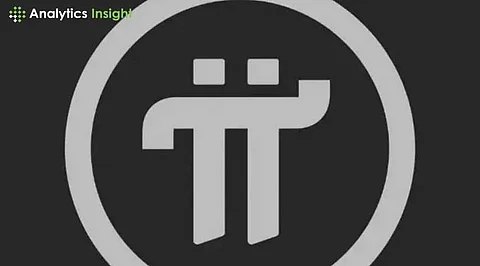

Pi Network makes headlines in the world of crypto. Its unique mobile mining configuration draws in millions. Pi Coin, the digital money of the network, creates a stir. Recent price spikes raise some huge questions.
Will Pi Coin reach $1? This piece dives into Pi Network’s climb, Pi Coin’s possibilities, and what’s moving its price.
Pi Network kicked off in 2019. It lets folks mine crypto right on their phones.
No expensive hardware needed. That opens the door for everyone. The target is a blockchain anyone can use. Everyday people get involved, no technical expertise required. More than 50 million users, referred to as Pioneers, mine Pi globally. The emphasis remains on establishing a community and real-world applications.
Pi Network stands apart from Bitcoin. Bitcoin mining eats up tons of power. Pi goes with a light system called Stellar Consensus Protocol. It’s easy on energy and keeps mining simple. Users tap the app each day to mine. Staying active earns rewards. KYC checks make sure users are real, cutting down on fakes.
Pi Coin’s price has been climbing. It peaked at $2.98 in February 2025, then dipped to $0.55 by April. Even with the slide, hope runs high.
The network continues to expand, generating interest. New users flood in by the day. Business partnerships open up Pi to more people. Some stores now accept Pi as a form of payment. That real-world application creates credibility. Yet, obstacles such as token unlocks and no large exchange listings raise eyebrows.
Over 1.5 billion tokens unlock in 2025. Too many tokens could drag prices down if buyers don’t keep up.
A few things steer Pi Coin’s value. A big community counts. Tons of active users create confidence. Pi’s 50 million Pioneers give it muscle. Daily mining keeps the vibe alive. Chatter on X and other platforms pumps up the excitement. Good vibes can nudge prices higher.
The ecosystem’s growth matters too. Pi Network rolls out apps for payments and more.
Those apps are based on Pi Coin. The more apps, the more demand for Pi. Business deals widen their application. If companies accept Pi, its value could increase. Mainnet development is a huge deal. A functional blockchain translates to real transactions. Delays may bump prices.
Cryptocurrency markets fluctuate immensely, and this affects Pi Coin.
Hips and dips in Bitcoin trickle down the effect to smaller coins. Governments adjusting regulations can turn the tables. Crypto trading is illegal in certain areas.
Clarity in legislation may drive Pi in the right direction.
JetBolt’s no-fee, speedy transactions draw eyes. Pi has to keep pushing to stay in the game.
Guessing Pi Coin’s price isn’t easy. Experts don’t agree. Some say $1 could happen by 2026 if more people use it.
Pi Coin runs into roadblocks. Token unlocks create more pressure. 126 million tokens got unlocked in April 2025.
There are more where those came from. That could drown prices. Delays in Mainnet frustrate users. A smooth launch is a requirement. Speedy blockchains, such as JetBolt, put Pi in jeopardy. JetBolt's shiny features attract users. Pi has to up its game.
Government rules loom large. Tighter laws could cap Pi’s growth. Slow progress stirs grumbles in the community.
The Pi crew must speak plainly. Transparency maintains high trust and users are engaged. Phonetapping with mining is a novelty. It's simple for anyone to participate. Functions like payment give it value. If Pi Network holds good, $1 isn't far-fetched. Rough patches persist, but the passion of the community keeps it going.
Pi Network's ascension turns heads. It's mobile mining disrupts crypto. Pi Coin experiences highs and lows. Reaching $1 depends on a few factors. Expanding the community, deploying the Mainnet, and securing partnerships are gigantic. Token unlocks and competitors pose risks. Market shifts and rules also play a part.
The crypto crowd keeps an eye on Pi. Its ease and community shine bright. If it tackles the tough stuff, Pi Coin might hit $1. The road goes on. Pi Network’s tale has more chapters to come.
